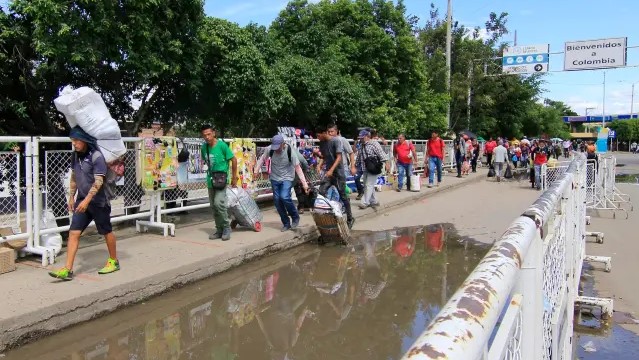
The proposal by the Merchants Association of he García de Hevia Municipality, together with various active forces of the jurisdiction, is to distribute all water by gravity to the whole area in the northern part of Táchira State, The goal of the proposal is solve the serious crisis that they live in the area with the water supply, which is complicated by the operation of motorized pumps that extract the liquid from underground wells.
By La Patilla – Anggy Polanco
Aug 18, 2022
The need to create a new mechanism to obtain and distribute piped water arose after suffering from prolonged power outages and fluctuations that do not allow the motor pumps to work consistently and properly.
“This is a critical problem that has been happening in this municipality for about 80 years, and it has become a habit,” said Juan Medina, President of the García de Hevia Merchants’ Association.
He pointed out that the water can be sent from natural reservoirs close to the urban area: one located in the “La Fría Industrial Zone” with a capacity of 8 million to 10 million liters of water; another in the Las Américas neighborhood with a capacity of 4 million liters, and a third located in the “28 de Octubre” neighborhood, with all operating 500 liters of water could be provided daily to each one of the families of García de Hevia.
He pointed out that the extraction of water through drilling to provide a municipality of about 90,000 inhabitants is an obsolete practice. This method is used for rural areas or in a small productive unit. This is the reason why they have exposed these concerns to “Hidrosuroeste” (Water service utility of the area) and other regional organizations.
In La Fría, capital of the municipality, they take the water from one sector to send it to another community, under the rationing measures, which means that water reaches each neighborhood every 15 days.
Photo from July 21st, 2022, showing agents of the Colombian National Police as they review the documents of people who cross the Francisco de Paula Santander International Bridge, which connects Ureña in the State of Táchira (Venezuela) with the Department of Norte de Santander. (Colombia). EFE / Mario Caicedo
“How can a municipality develop that without the water to supply an industry, a company or basic services for restaurants or hotels,” highlighted Mr. Medina
Traders often tell customers and visitors that there is no water in the town, while the community has become accustomed to this situation.
Although this is not about State policy, the president of the merchants’ association indicated that this is about seeking a solution to public policies, given that they affect the social, cultural and economic order of the municipality.
He compared nearby municipalities that have developed gravity-fed water mechanisms, despite the fact that they are steep mountainous areas, and that is why this municipality, being flat, would have an advantage.
“This impedes development. Therefore, there is no company that approaches us to invest in this municipality, because of the lack of public services. This is manifest, is visible, it is tangible,” commented Juan Medina.
Hence, merchants are concerned about the imminent commercial opening of the border of Táchira State, but so far no one is talking about plans to improve public services in the García de Hevia Municipality, a jurisdiction that has an airport in good condition, a unique industrial zone and a long and clear border zone with Colombia.
…
Read More: La Patilla – Tachiren merchants propose a project to improve water service before imminent border opening
…

